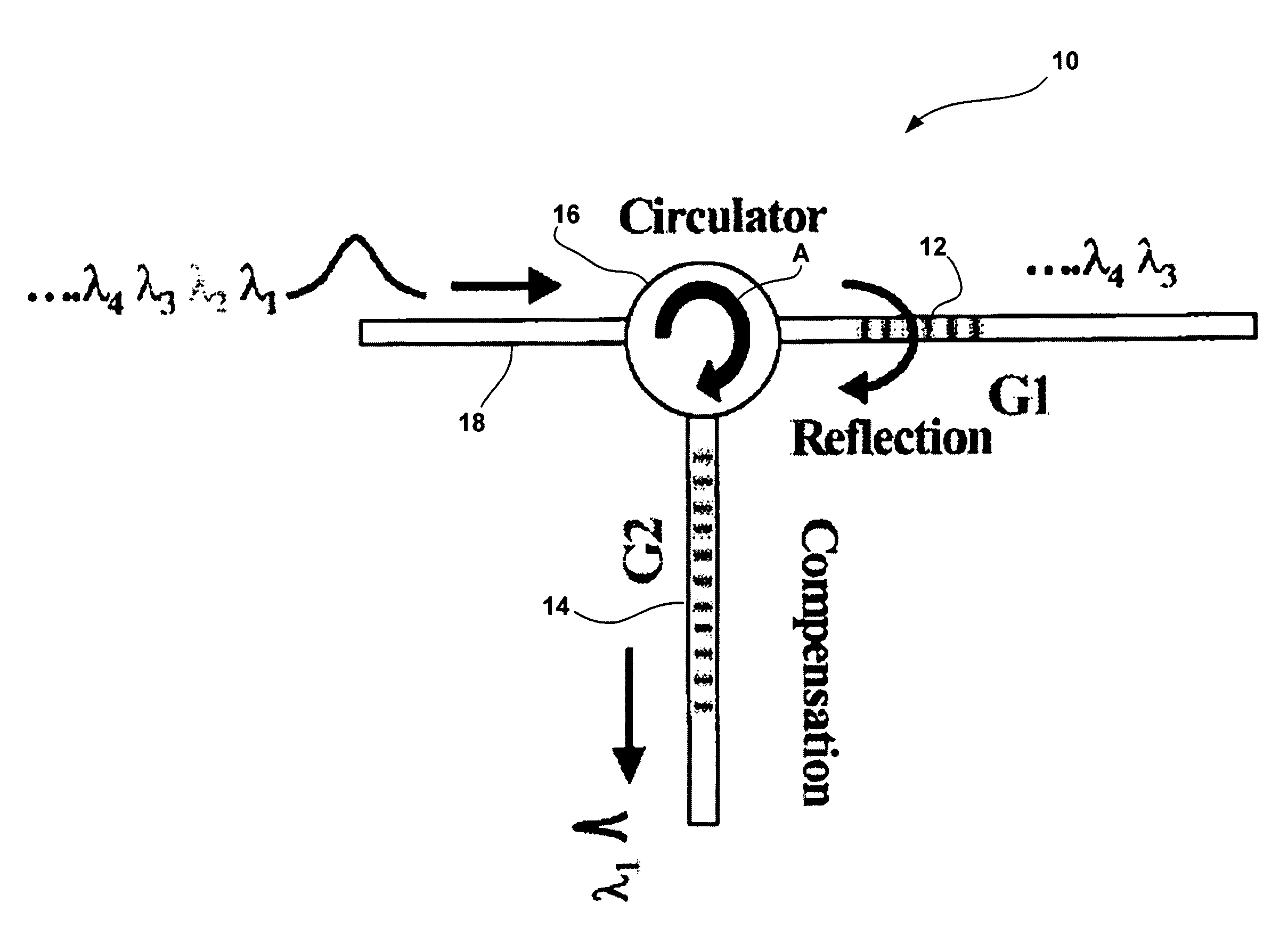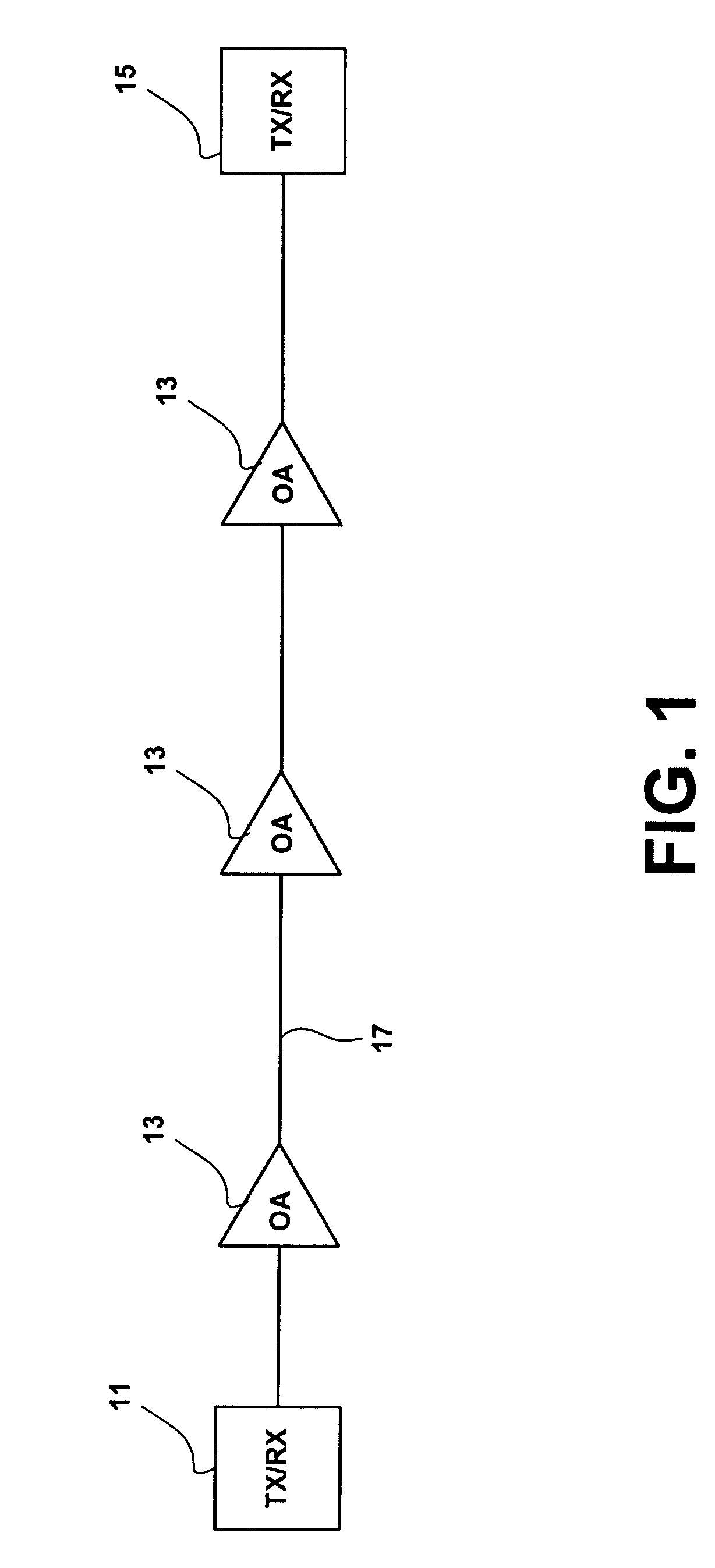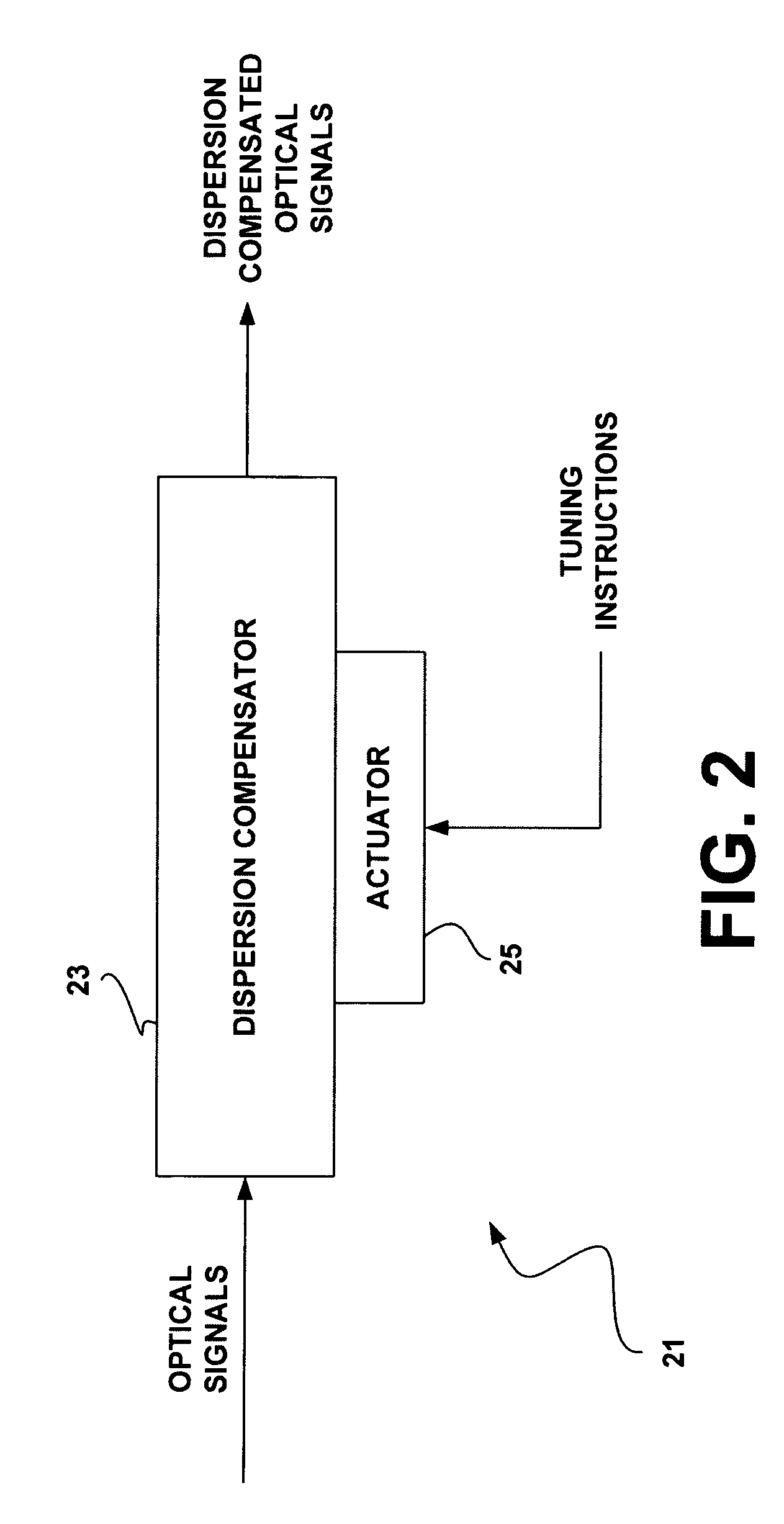System and method for performing dispersion compensation
a technology of dispersion compensation and optical fiber, applied in multiplex communication, transmission monitoring, instruments, etc., can solve the problems of complex compensation of dispersion in these systems, complicated setup of such a receiver, and various deleterious effects of fiber optic communication systems
- Summary
- Abstract
- Description
- Claims
- Application Information
AI Technical Summary
Benefits of technology
Problems solved by technology
Method used
Image
Examples
Embodiment Construction
[0021]The present disclosure will now be described more fully with reference the to the Figures in which various embodiments of the present invention are shown. The subject matter of this disclosure may, however, be embodied in many different forms and should not be construed as being limited to the embodiments set forth herein.
[0022]FIG. 1 shows an optical-fiber based system employing an embodiment of the invention. The optical fiber-based system may be configured to transmit data over the optical fiber link 17. The system may include a first optical transceiver 11, which is configured to both receive and transmit optical signals over the data link. The system may also include a second optical transceiver 15. The system depicted in FIG. 1, may be a bidirectional optical communication system. While a bidirectional system is shown in FIG. 1, one of ordinary skill in the art will understand that an optical system may be unidirectional, and may include a receiver at one end and a trans...
PUM
 Login to View More
Login to View More Abstract
Description
Claims
Application Information
 Login to View More
Login to View More - R&D
- Intellectual Property
- Life Sciences
- Materials
- Tech Scout
- Unparalleled Data Quality
- Higher Quality Content
- 60% Fewer Hallucinations
Browse by: Latest US Patents, China's latest patents, Technical Efficacy Thesaurus, Application Domain, Technology Topic, Popular Technical Reports.
© 2025 PatSnap. All rights reserved.Legal|Privacy policy|Modern Slavery Act Transparency Statement|Sitemap|About US| Contact US: help@patsnap.com



